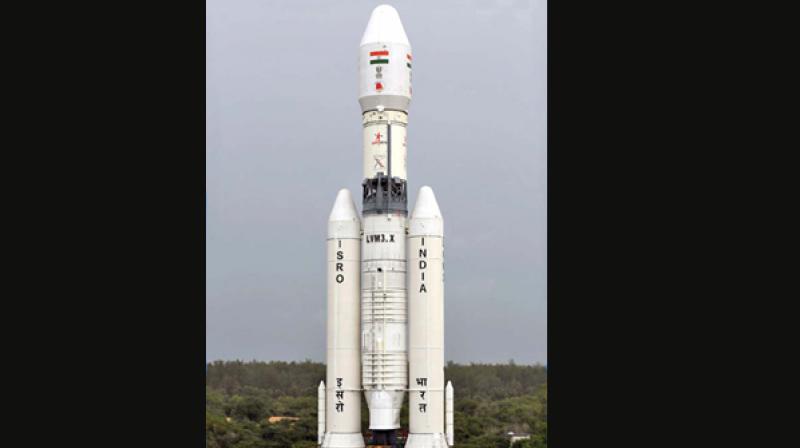GSLV-Mk III next for Isro to be launched in January
The indigenous first developmental vehicle is capable of placing the 4-tonne class GSAT satellites into the Geostationary Transfer Orbit.

Chennai: The 640-tonne GSLV Mk-III, Isro’s heaviest rocket till date, is likely to be launched in January as some stages of the rocket are still undergoing tests.
Isro first had planned to launch the heavy rocket in December end. But the largest cryogenic engine CE-20 developed for this rocket is yet to be delivered as it is undergoing tests at Isro’s Propulsion Complex (IPRC) in Mahendragiri, Tamil Nadu.
The indigenous first developmental vehicle is capable of placing the 4-tonne class GSAT satellites into the Geostationary Transfer Orbit. The 43.43-metre tall vehicle has the liquid and cryogenic stage and two S200 solid rocket boosters.
“All the systems are now getting ready. The L110 and S200 stages are already delivered to Satish Dhawan Space Centre in Sriharikota. The cryogenic engine CE-20 is still not delivered as the engine tests are going on,” K.Sivan, director, Vikram Sarabhai Space Centre (VSSC), Thiruvanan thapuram told Deccan Chronicle.
The cryogenic stage for the vehicle is expected to be delivered sometime in December. “The exact date for the launch will be finalised only when we finish our tests. It’s not like PSLV or GSLV launches. It’s a new stage, new testing and some new observations will be there and we have to solve the teething issues. In all likelihood, the launch may go to January,” he said.
GSLV-Mk-III rocket will launch the 3.2-tonne GSAT-19 satellite into the Geosynchronous Transfer Orbit. “GSLV-Mk-III will launch the satellite like our regular GSLV rocket,” K.Sivan said.
The 25-metre height solid rocket boosters will burn 207 tonne of solid propellant each to give the required thrust to lift off the vehicle. The GSAT-19 satellite will carry Ka and Ku-band payload along with a Geostationary Radiation Spectrometer (GRASP) payload to monitor and study the nature of the charged particles and influence of space radiation on spacecraft and electronic components.
Earlier, Isro had tested the 3,775 kg Crew Module Atmospheric Re-entry Experiment (CARE) using the GSLV-Mk-III rocket which flew with a passive cryogenic stage. The module re-entered the atmosphere from the height of 126 km and deployed its parachutes as planned and splashed down in the Bay of Bengal.
